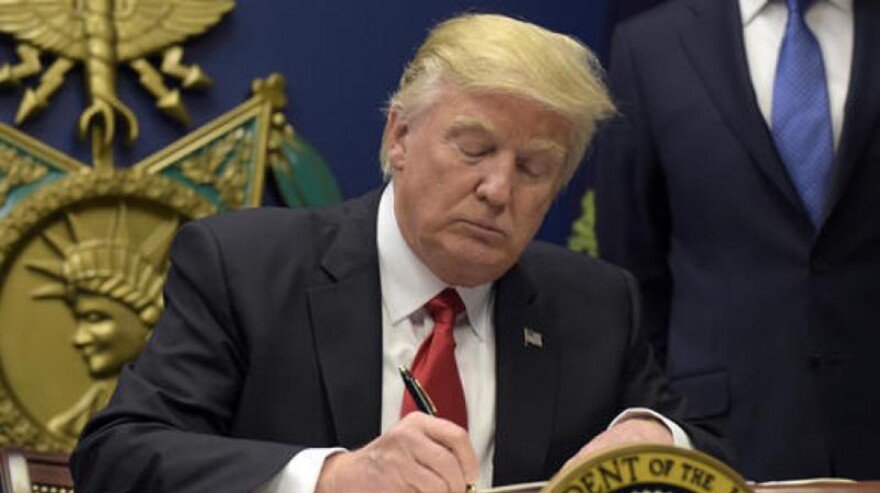President Donald Trump wants Michigan automobile manufacturers to move entire supply chains to the U.S. And he’s put steep tariffs on the automotive industry in an attempt to spur that change. But many of these manufacturers are taking a wait-and-see approach because of the administration's constantly changing policies, and the cost associated with moving production.
After President Donald Trump’s 25% automotive import tariffs went into effect April 3, a report from Reuters estimated auto sales could decline by two million.
Kate Magill, the lead editor of Manufacturing, Dive, and Supply Chain Dive, has reported on how manufacturers are trying to embrace flexibility. Magill told Stateside how these manufacturers are working with suppliers to move orders in anticipation of tariffs down the road.
“(Flexibility is) working with those other component suppliers and customers throughout your supply chain to try to mitigate this as much as possible.”
It’s harder than it sounds to move entire production processes, though. Jeff Rightmer, Associate professor at Wayne State University's Department of Global Supply Chain Management, has seen this process take months.
“It's not just an easy thing to say, ‘Okay, I'm moving this back,’” Rightmer said. “Then you have a lot of products or a lot of things that they're buying that are very labor-intensive. Wiring harnesses, for example, it’s very labor-intensive. Bringing it back to the United States would be very difficult.”
Magill said some companies are hurting. Cleveland-Cliffs cut 600 jobs in Michigan while mitigating the Trump administration’s effects on tariffs on steel and auto imports. In a statement, the company wrote that it’s confident that steel production at the Dearborn Works plant would resume once Trump’s policies took full effect and automotive production was re-shored.
“Cleveland Cliffs is one of the really standout examples that we've seen so far of a company kind of citing the current market forces from tariffs as a reason for some production idling and therefore layoffs,” Magill said.
On the other hand, United Auto Workers wrote that this was the “beginning of the end of a thirty-plus year ‘free trade’ disaster.” They argued that the new policies would bring auto jobs back to Michigan and allow auto makers to absorb tariff costs instead of consumers. Rightmer said he disagrees with this argument.
“You can also make the case that a lot of jobs that have gone away in the auto industry have been through advancements in production,” Rightmer said. “Even if you start bringing these things back, you're going to see less job growth than 10 years ago, just because productivity has gone up so fast and you just don't need as many people and certainly if it moves into the south you may not have a union down there and so the UAW workforce may not grow.”
Manufacturers are also concerned about growth of the workforce. While recruitment and training of qualified workers in high-tech areas has been a problem for several years, Magill said it’s at the top of manufacturers’ minds more than ever.
“The Trump administration is really prioritizing the growth of this area, and it requires a very specific set of high-tech manufacturing skills,” Magill said. “Finding workers in the U.S. qualified to fill these positions is proving really difficult and is definitely a concern for this segment of manufacturers.
Expanding manufacturing may be difficult in the U.S. due to the shortage of labor. While in Mexico, there’s a younger, more highly trained workforce able to get in these trends.
“There is a shortage in skilled trades, and that has been over the last probably five to six years, and recruiting and getting people to go into those trades is difficult.”
Going forward, experts like Magill and Rightmer are watching for additional trade reviews and tariffs, especially given federal investigations opened into the pharmaceuticals, semiconductors, and critical minerals industries. They are also watching as trade talks between partner countries continue to evolve.









